-
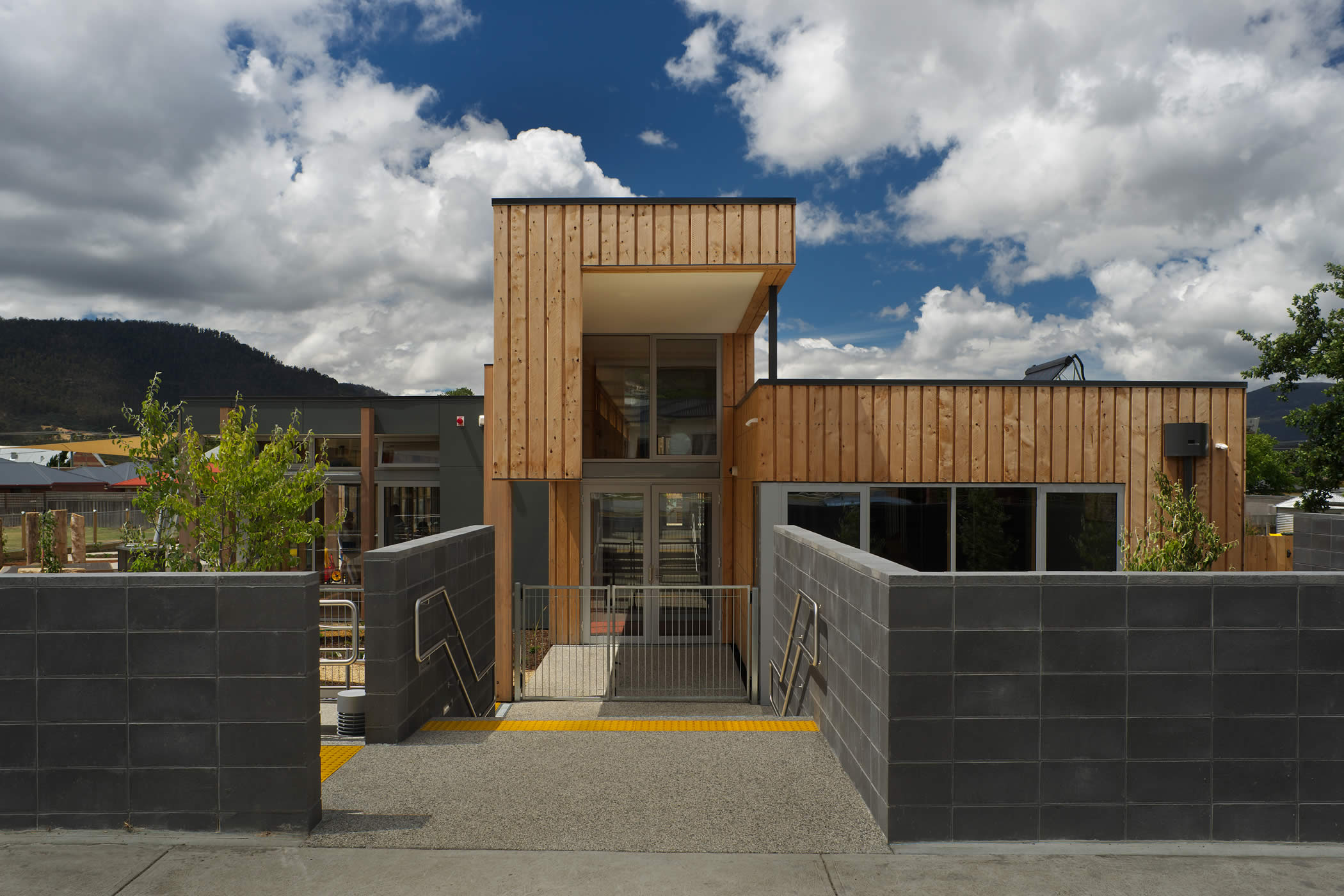
Ptunarra Child and Family Centre (CFC), New Norfolk, Tasmania: The arrival facade expresses the play mezzanine which runs the building length, with learning areas to the north and community service rooms to the south. Photo by Ray Joyce.
-
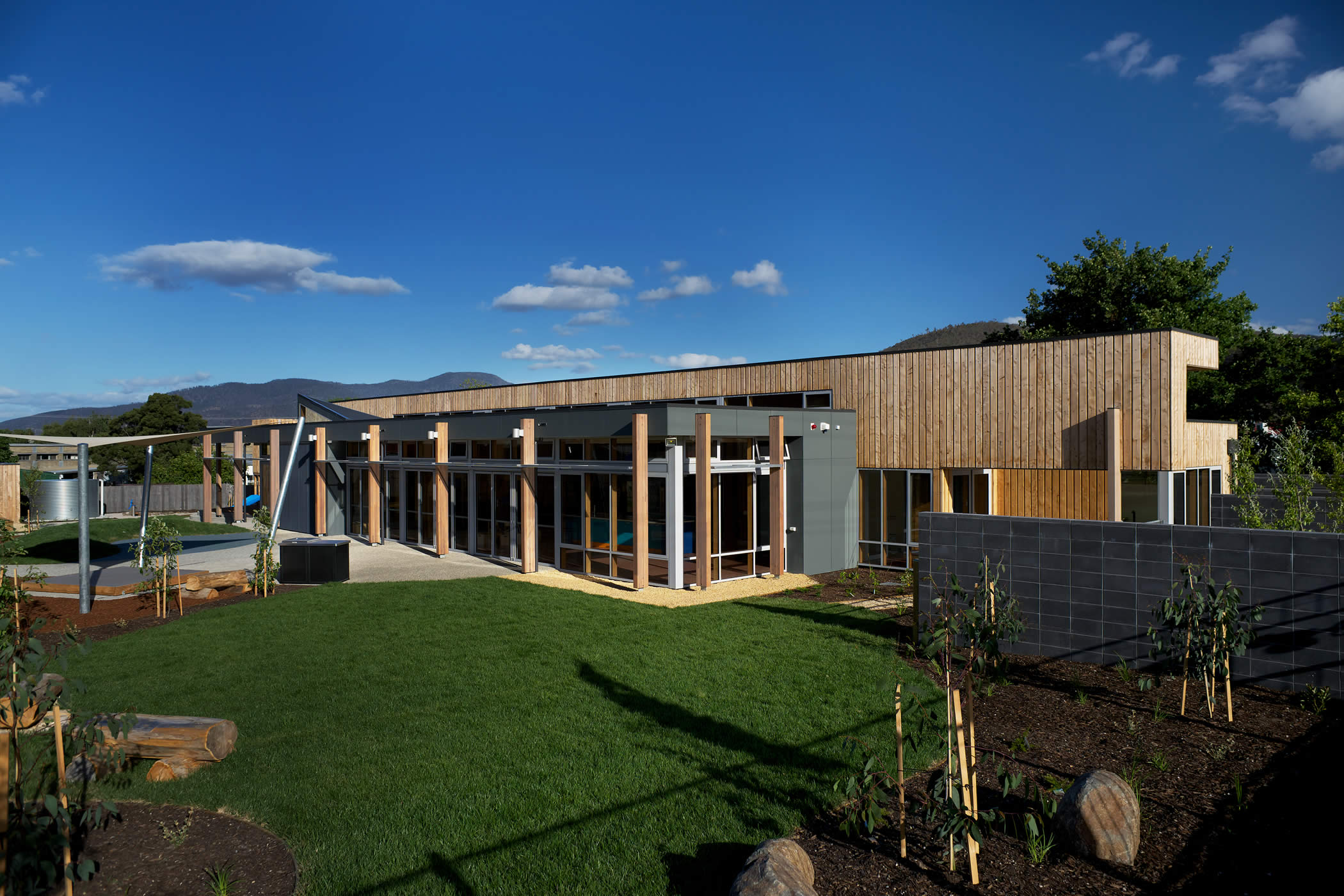
Ptunarra Child and Family Centre (CFC), New Norfolk, Tasmania: The external facades are clad in macrocarpa timber with minimal applied finishes to achieve the building’s low carbon footprint. Photo by Ray Joyce.
-
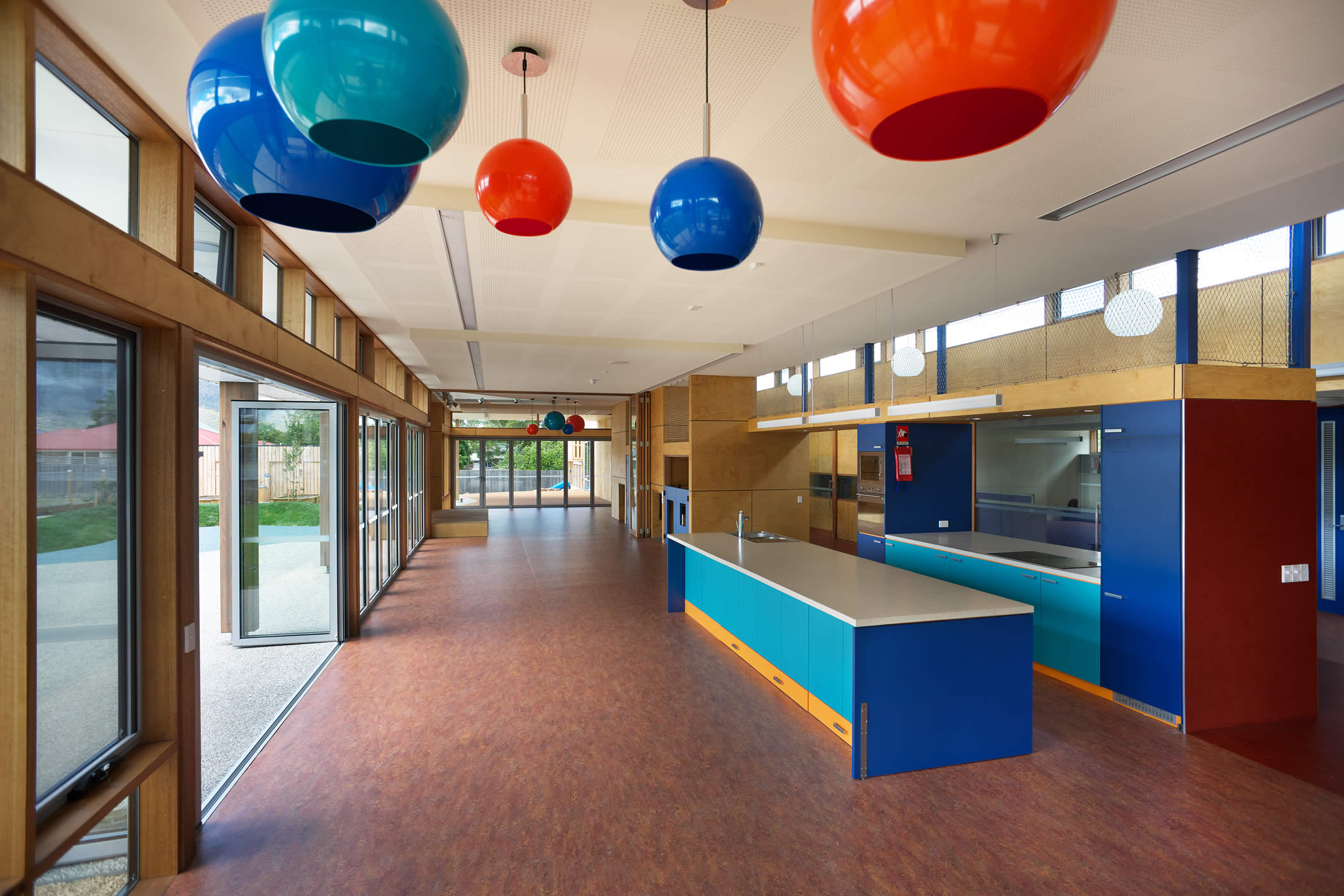
Ptunarra Child and Family Centre (CFC), New Norfolk, Tasmania: Low toxic materials and effective natural lighting, solar control, cross ventilation and thermal mass achieves a healthy and comfortable interior environment. Photo by Ray Joyce.
-
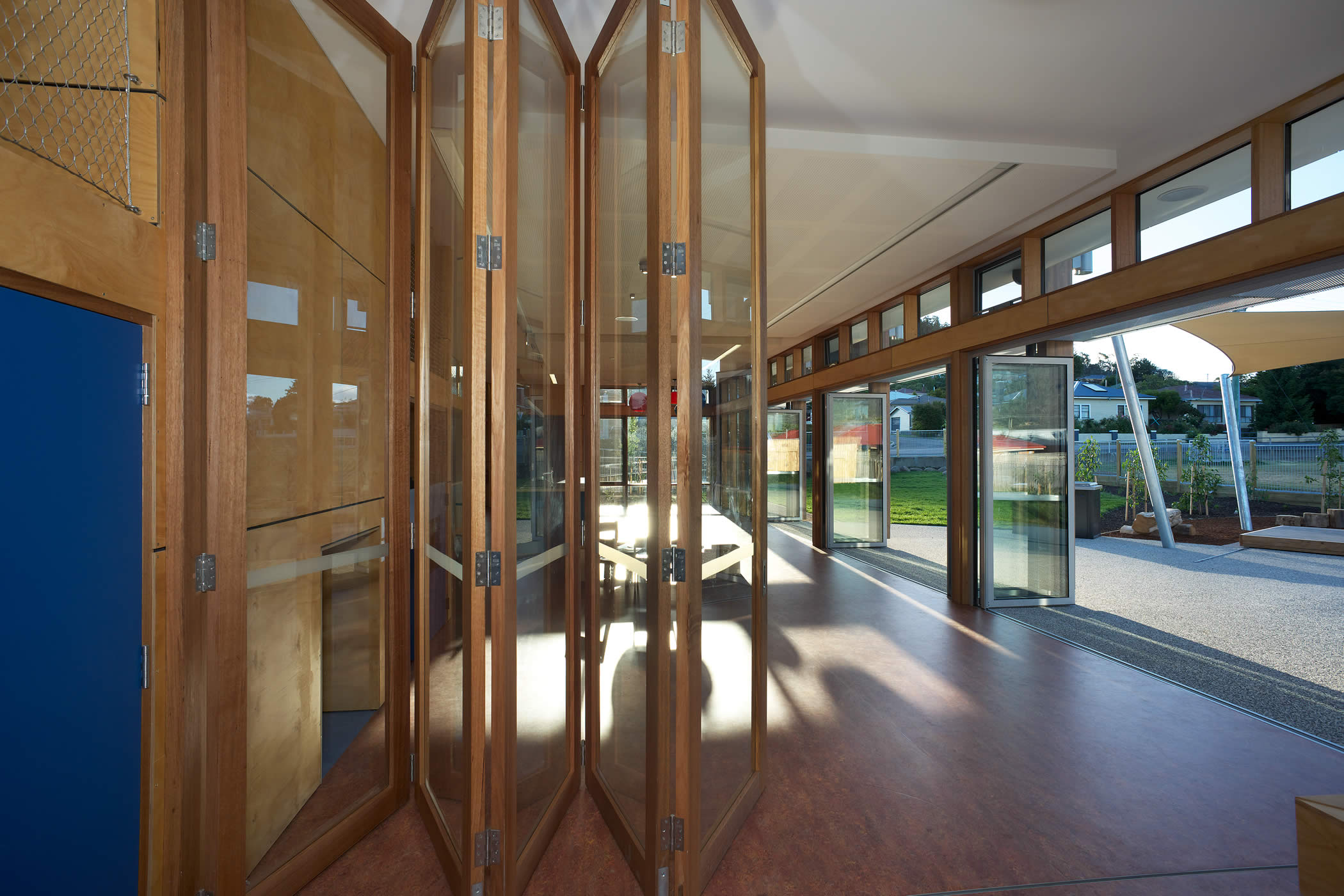
Ptunarra Child and Family Centre (CFC), New Norfolk, Tasmania: Passive solar design achieves learning areas that open to northerly outdoor play and the benefits of cost effective space heating. Photo by Ray Joyce.
-
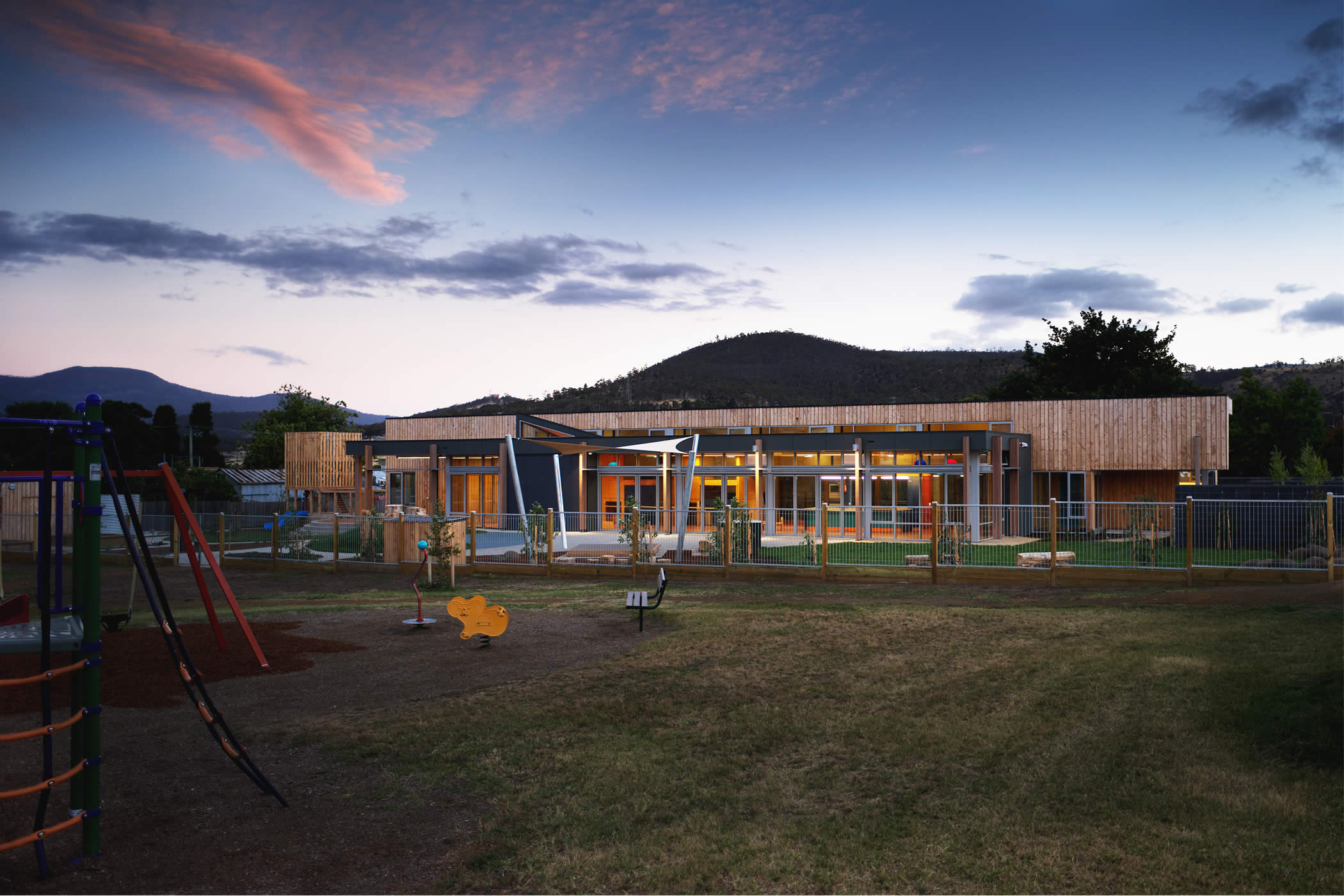
Ptunarra Child and Family Centre (CFC), New Norfolk, Tasmania: The CFC provides passive surveillance, a positive community presence and a strong sense of place to the adjacent park that previously attracted anti-social behaviour. Photo by Ray Joyce.
-
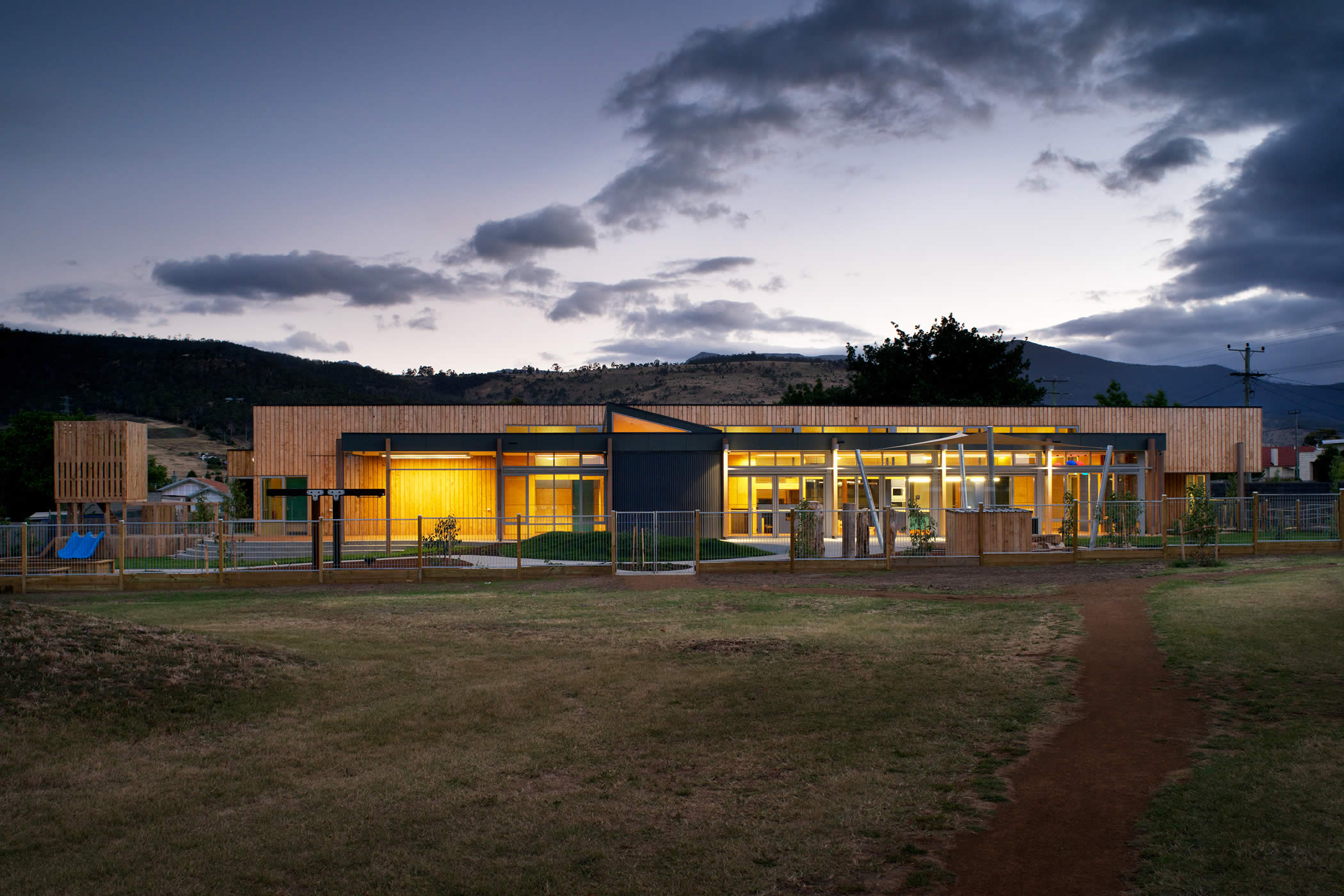
Ptunarra Child and Family Centre (CFC), New Norfolk, Tasmania: The northern solar wall pumps fresh air heated by solar radiation into the building which combines with in-floor hydronic heating for cost effective space heating. Photo by Ray Joyce.
Ptunarra Child and Family Centre, New Norfolk, is an energy efficient building with a low carbon footprint and low operational costs. Its energy consumption is less than 25% of similar child and family centres resulting in a greater proportion of the centre’s annual working budget being available for social programs. These include artist residencies and music therapy programs for children in child protection.
Passive solar design maximises use of solar radiation for space heating by means of appropriate orientation and building form, double glazing, correctly placed thermal mass, high levels of insulation, and detailing to minimise thermal bridging. Hydronic heating uses an energy efficient reverse cycle heating source, and a solar wall pumps fresh air heated by solar radiation into the building. Cooling is achieved by sun shading, cross ventilation and thermal mass to absorb excessive heat. The centre has a solar hot water system.
The building conserves natural resources. Rainwater is harvested and used for toilet flushing, landscape watering and children’s play. No finish is applied to the external timber cladding. Internal timber lining has natural oiled finish. Floor finish is made from natural materials. The external cladding is macrocarpa timber, harvested locally as part of weed eradication program.
Our environmentally sustainable design (ESD) delivers a building with low embodied carbon achieved through the extensive use of timber for the building’s structure, external cladding and internal lining, through avoiding use of materials (like steel and aluminium) and applied finishes (like paint) with a high carbon footprint where possible, and through choice of floor finishes (like marmoleum) that have a low carbon foot print.
Ptunarra is located in an area of disadvantage. Its socially sustainable architecture is engaging and accessible. The non-institutional atmosphere and user-friendly scale creates a non-threatening setting that attracts use, supports access to difficult to deliver services, builds community and combats social isolation. Increased community presence, passive surveillance and a sense of community ownership and pride have contributed to social renewal in this area of town previously known for its anti-social behaviour.